
Context
I faced challenges in managing an effective, interactive classroom and creating learning atmosphere in my early teaching career as an assistant lecturer of English at Hetauda School of Management and Social Sciences, Nepal. Due to my overconfidence, I used to think that knowing contents of teaching was enough for effective teaching. Therefore, I prepared for the classes by focusing very well on the content of the prescribed English textbooks and allied materials. I mostly used to adopt lecture methods for teaching; therefore, students would receive very little time to interact in the class. On the other hand, students’ seating arrangement, two rows of fixed desks and benches, was designed in a way to facilitate teacher-centered and lecture-based instruction. There was a projector for displaying slides, videos, and other related digital materials in the classroom. There would be an average of fifty undergraduate students in the classroom with proper uniforms. However, the environment of the classroom until the middle of the academic session became chaotic and messy. Therefore, I had to spend a long time systematizing the classroom before beginning the lecture, and time and again I had to stop because of an unpleasant classroom environment. Despite the various attempts to manage the classroom, it remained messy and chaotic. In this narrative , I reflect on how I effectively managed such a noisy and chaotic classroom in the middle of the academic year.
Introduction
In contrast to behaviour management, classroom management is a broader concept that focuses on the management of all the students in the classroom (Stevenson et al., 2020). Classroom management incorporates all the actions of the teachers in constructing the classroom environment to promote students’ academic growth and social behaviour (Velásquez et al., 2023). In addition, effective classroom management encourages the students to obtain maximum benefits from classroom activities and controls the unwanted behaviour of the students in the classroom (Bozkuş, 2021). Therefore, a well-managed classroom has wider implications as it aims to organize an orderly teaching and learning environment to enhance the learning outcomes of classroom activities and promote students’ social relations (Brophy, 1983; Marzano & Marzano, 2003; Shank et al., 2022; Wubbels, 2011). Moreover, some studies reported that managing the classroom at the beginning of the academic session made it easier for teachers to handle the class successfully during an academic session (Emmer et al., 1980; Lopez-Pelcastre, 2023). However, from the beginning of the academic session, I encountered various obstacles in managing a well-organized classroom environment. I found that the students were almost not concentrating in my class. They began making noises in the classroom including personal talks with their friends, which didn’t contribute to the learning vibes in the classroom. Some of the students developed unique ways to disturb the class, such as tapping their shoes on the floor, making a sudden unusual sound etc. Others would zone out, which indicated that they did not have motivation to attend my class.
This situation had been going on for a few months, which made me almost frustrated with the teaching profession. I also did not have personal satisfaction, and even I could not sleep very well at night. Sometimes, these noisy students would bother me even in my dreams. To get rid of this, I read several books about managing the classroom and realized that teaching profession requires numerous qualities to be successful, and having only knowledge about the content of teaching would not be adequate. Then I began pondering how to effectively manage the classroom. And I argue that noisy and chaotic classrooms can be effectively managed by understanding the students properly, reviewing our teaching methods and classroom activities, and receiving feedback from the students even in the middle of the academic session.
Why behind what
Gradually, I began exploring the reasons behind such chaotic and disturbing classrooms through formal and informal communication with the students. Some reported that they were feeling bored because of long lectures, and due to lack of classroom activities, etc. Based on what they shared and my experiences, the following were some of the possible reasons for my classroom mismanagement:
- The lecture method to deliver the textbook contents made the class monotonous and didn’t give them space to share their ideas in the classroom. They received limited opportunities for questioning and arguments in the classroom.
- Lack of activities to engage students was another reason as they did not receive an opportunity to construct knowledge by interacting among them. They were limited with my lectures, handouts, and prescribed textbooks.
- The inability to understand and address students’ interests and passion and merely emphasizing the textbooks.
- Lack of adopting student-centred teaching methods and adopting teacher-centred approaches. Students had fewer opportunities to interact with each other and had to participate in the classwork on the basis of what I instructed them. They received less opportunities for creative and constructive activities in the classroom; instead, they became passive listeners.
Ways Forward
By exploring the actual reasons behind classroom mismanagement, I transformed the ways of teaching, focusing on student-centred teaching approaches. The following were the ways forward to overcome the problems of mismanagement in my classroom:
Establishing Friendly Relationships with Students
I established friendly relationships with the students by properly understanding them and respecting their ideas. I spent adequate time listening to their responses about their various issues within the classroom and outside the classroom, such as in the interval time, in the canteen, library, etc. Gradually, I realized that establishing better relationships with students supported my ability to receive feedback from the students and ultimately assisted in transforming the classroom into a more interactive learning space. In addition, such relationships helped the students develop a positive attitude toward each other and provided enough room for understanding. As a result, I found greater participation of students in classroom activities and a change in their attitude toward being more positive, supportive, and collaborative inside and outside the classroom. Consequently, the previous noisy and chaotic classroom disappeared instead; a more interactive, collaborative, and learning classroom appeared with the positive vibration of exploring insightful information both in me and the students. In addition, I found that such friendly relationships with the students established a solid foundation of academic excellence and transformed the students into more responsible individuals for their work. However, I found that very few of the students attempted to misuse such friendly relations by involving themselves in the debate out of context in the classroom and making various excuses about their classroom activities and home assignments.
Teaching with Fun
I transformed my ways of teaching by focusing on various approaches such as discussion, interaction, collaboration, presentation, argumentation, and so forth. I minimized my long, monotonous lecture method and focused on mini-lectures if they were required. As a result, students began participating in learning activities as I promoted group discussion, sharing, interaction, and collaboration in the classroom. I formed some groups in the classroom to have discussions on various issues related to solving the problems. From the few days’ practice, the majority of the students learned to be engaged in classroom activities and developed their power of patience by waiting their turn and respecting each other’s ideas. In addition, I blended some sort of humour into the classroom by cracking jokes and sharing some real and imaginative stories if I realized students were feeling bored. Moreover, I began to display English videos associated with ongoing classroom discussions that assisted me in creating an interesting learning environment in the classroom by boosting their English language power and providing fun for them. Teaching with fun with the support of various videos and sharing jokes and stories in the classroom helped me energize the students for learning by involving them in various classroom activities instead of making unnecessary noises. These findings, to some extent, aligned with the study of MacSuga-Gage et al. (2012), who claimed that effective teaching helped manage the classroom.
Individual Care for the Students in the Classroom
I found various kinds of students in the classroom with unique manners and ways of learning. I began to think about them, particularly focusing on how to motivate them in classroom activities. I started individually supporting the students, mainly selecting those who rarely participated in classroom activities. Instead of staying in the same place in the classroom, I visited individual students, particularly during classroom activities, which helped me understand the real problems of the students. During such visits, students asked even simple problems that they could not ask in the mass (perhaps they feared that their friends would laugh at them). Such practices assisted me in developing personal relationships with the students, which ultimately contributed to managing the classroom. As I began supporting them, they also became supportive in the classroom. They started listening to my instructions and following the procedures of the activities without disturbing the entire learning environment in the classroom. In addition, I prepared their individual portfolios, which helped me understand the students better and helped them in the classroom. Ultimately, such individual care in the classroom assisted the students to be more proactive and interactive in classroom activities, which gradually supported me in transforming the previously chaotic and noisy classroom into a more innovative and interactive space.
Conclusion
Establishing friendly relationships with students and teaching with fun and individual care for the students in the classroom, as discussed above helped me in creating an effective learning environment in my classroom. Pondering over the mismanagement of the classroom, receiving feedback from the students, and transforming the classroom teaching and learning process accordingly contributed to solving the problems of mismanagement in the classroom. As a result, my noisy, chaotic classroom gradually turned into innovative, interactive, collaborative classroom.
References
Bozkuş, K. (2021). A systematic review of studies on classroom management from 1980 to 2019. International Electronic Journal of Elementary Education, 13(4). https://doi.org/10.26822/iejee.2021.202
Brophy, J. E. (1983). Classroom organization and management. The elementary school journal, 83(4), 265-285.
Emmer, E. T., Evertson, C. M., & Anderson, L. M. (1980). Effective classroom management at the beginning of the school year. The Elementary School Journal, 80(5), 219-231.
Lopez-Pelcastre, A. (2023). The influence of classroom management on student learning and behavior in the classroom.
MacSuga-Gage, A. S., Simonsen, B., & Briere, D. E. (2012). Effective teaching practices: Effective teaching practices that promote a positive classroom environment. Beyond Behavior, 22(1), 14-22. https://doi.org/org/10.1177/107429561202200104
Marzano, R. J., & Marzano, J. S. (2003). The key to classroom management. Educational Leadership, 61(1), 6-13.
Shank, M. K., Santiague, L., & ideas. (2022). Classroom management needs of novice teachers. The Clearing House, 95(1), 26-34. https://doi.org/org/10.1080/00098655.2021.2010636
Stevenson, N. A., VanLone, J., & Barber, B. R. (2020). A commentary on the misalignment of teacher education and the need for classroom behaviour management skills. Education Treatment of Children, 43(4), 393-404. https://doi.org/org/10.1007/s43494-020-00031-1
Velásquez, A. M., Mendoza, D. F., & Nanwani, S. K. (2023). Becoming a competent classroom manager: A case study of a preservice teacher education course. Teaching Education, 34(2), 147-169. https://doi.org/org/10.1080/10476210.2022.2048646
Wubbels, T. (2011). An international perspective on classroom management: What should prospective teachers learn? Teaching Education, 22(2), 113-131. https://doi.org/org/10.1080/10476210.2011.567838
About the Author: Surendra Prasad Ghimire is an MPhil Scholar at Nepal Open University, Nepal, and a Lecturer of English at a QAA-certified college, Hetauda School of Management and Social Sciences, Makwanpur, Nepal.




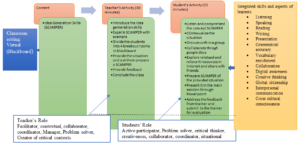




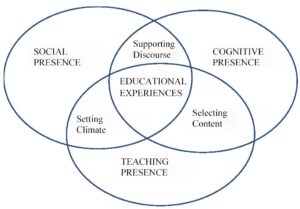 Community of Inquiry by Garrison, Anderson, and Archer (2000, p. 2)
Community of Inquiry by Garrison, Anderson, and Archer (2000, p. 2)




 Hold the carpet toward the students and say ‘carpet’. Now say, ‘This is a carpet.’ (show it and say twice). As you lay the carpet on the floor, you can choose to say one of Hold the carpet toward the students and say ‘carpet’. Now say, ‘This is a carpet.’ (show it and say twice). As you lay the carpet on the floor, you can choose to say one of these:
Hold the carpet toward the students and say ‘carpet’. Now say, ‘This is a carpet.’ (show it and say twice). As you lay the carpet on the floor, you can choose to say one of Hold the carpet toward the students and say ‘carpet’. Now say, ‘This is a carpet.’ (show it and say twice). As you lay the carpet on the floor, you can choose to say one of these:
 Take the round cushion and say, ‘a round cushion’ before you say, ‘It’s a round cushion.’
Take the round cushion and say, ‘a round cushion’ before you say, ‘It’s a round cushion.’
 Hold the girl doll, show and say, ‘a girl’. Then say: She’s a student. Similarly, take the boy doll, show and say ‘a boy’ before saying the sentence: He’s a student too.
Hold the girl doll, show and say, ‘a girl’. Then say: She’s a student. Similarly, take the boy doll, show and say ‘a boy’ before saying the sentence: He’s a student too.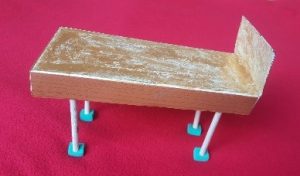 made of metal. Place the bed behind the girl and the boy and say: Behind the girl and the boy. ‘there’s a bed’.
made of metal. Place the bed behind the girl and the boy and say: Behind the girl and the boy. ‘there’s a bed’. Show pen and say, ‘a pen’. Now say: It’s a pen.
Show pen and say, ‘a pen’. Now say: It’s a pen. Show a broom and say ’a broom’. Now say:
Show a broom and say ’a broom’. Now say: ‘The broom is between the boy and the girl.’
‘The broom is between the boy and the girl.’ Show mattress and say: a mattress. Now say: ‘It’s a mattress.’
Show mattress and say: a mattress. Now say: ‘It’s a mattress.’ Show ladder and say –a ladder.
Show ladder and say –a ladder. woman and say: This woman is going to bed. Now dramatically make the woman walk toward the ladder and say: The woman is walking towards the ladder.
woman and say: This woman is going to bed. Now dramatically make the woman walk toward the ladder and say: The woman is walking towards the ladder.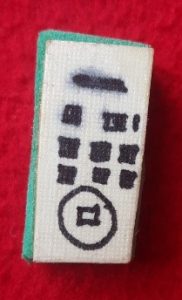
 ‘She is climbing down the ladder. There’s some price to pay when you forget, isn’t there?’
‘She is climbing down the ladder. There’s some price to pay when you forget, isn’t there?’ Now say, ‘She was too tired and now she’s fast asleep. She’s
Now say, ‘She was too tired and now she’s fast asleep. She’s  sleeping like a log/rock.’
sleeping like a log/rock.’



















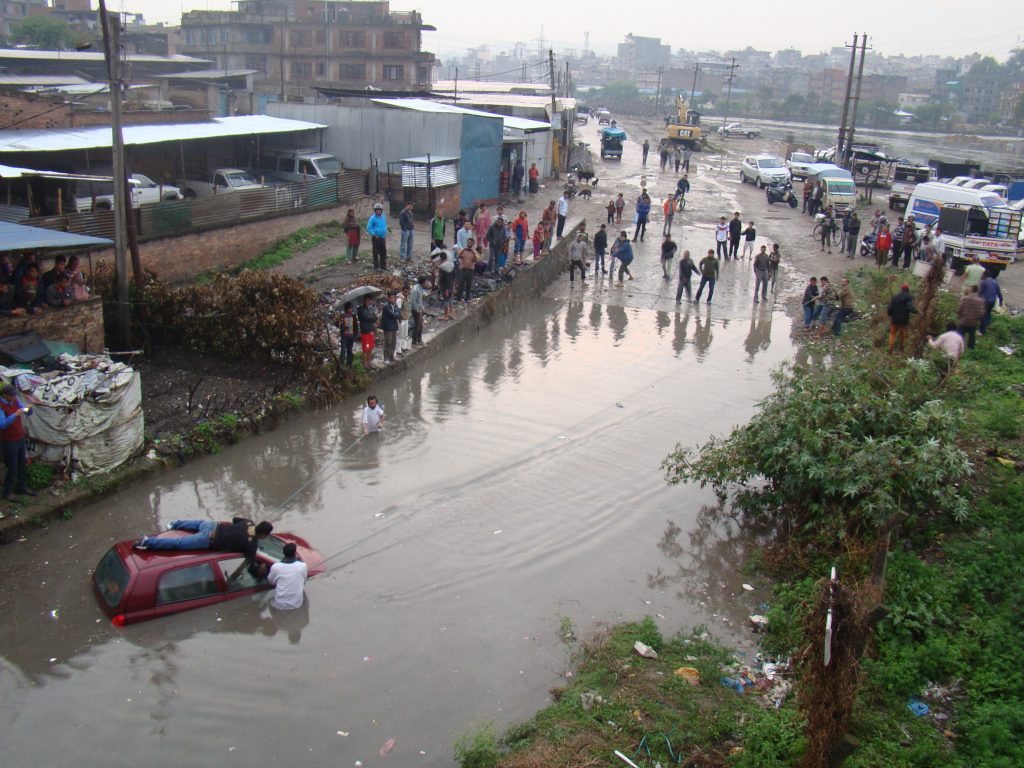


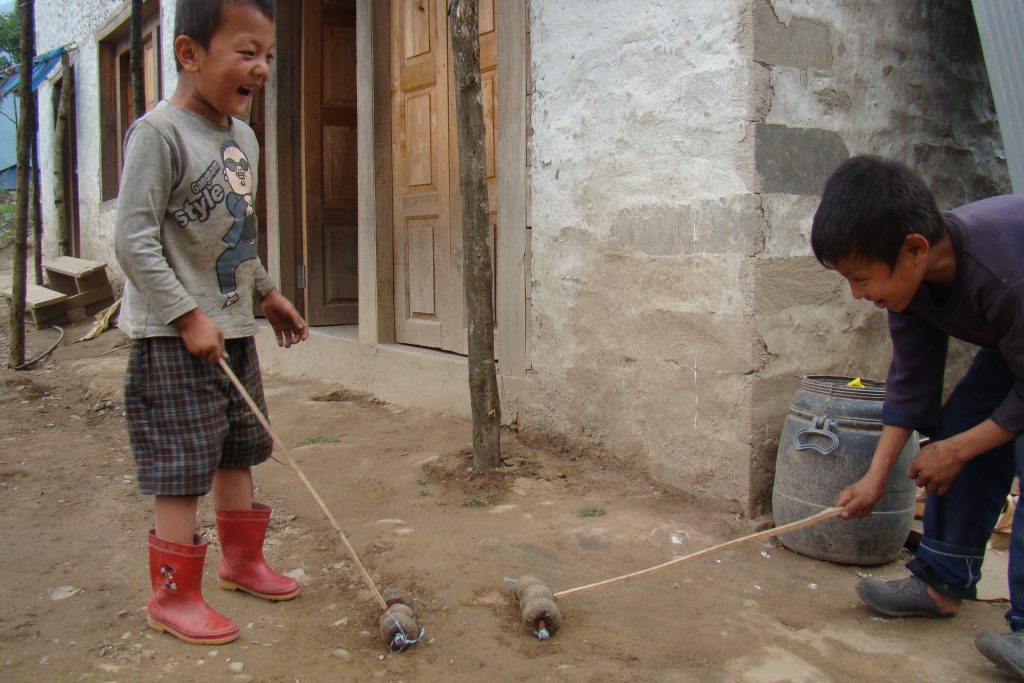
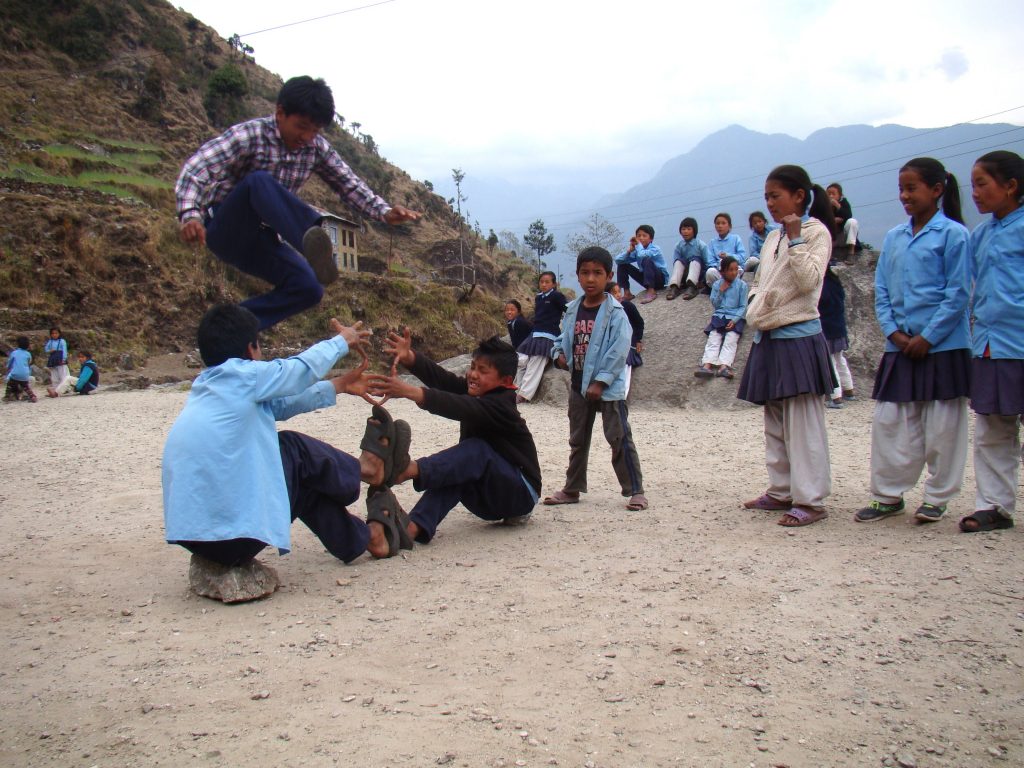

 Why is child literature important?
Why is child literature important? 